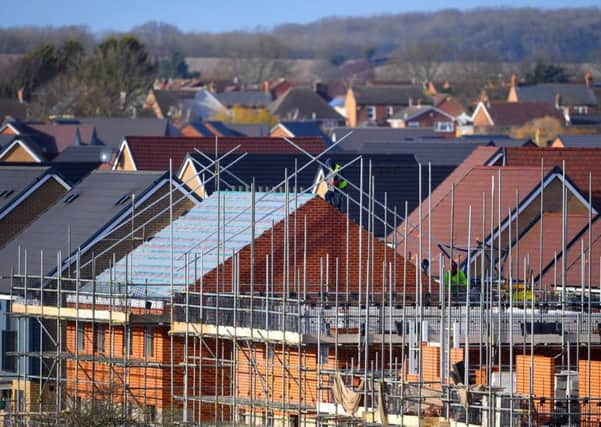Calls to close legal '˜loophole' over housing


Shelter, joining up with the Campaign to Protect Rural England (CPRE), has carried out analysis of eight rural councils’ data.
Their findings, they say, were that half of all affordable homes sought by councils nationwide were lost when viability assessments - measuring if sites can make a reasonable profit - were used, with the result being a “serious impact” on countryside communities.
Advertisement
Hide AdAdvertisement
Hide AdThe two charities are now calling for urgent action from Government ahead of a speech on Monday by Sajid Javid, Secretary of State for Housing, Communities and Local Government, when he is expected to outline reforms to national planning rules.
“A lack of affordable housing is often seen as an urban problem, with issues of affordability in rural areas overlooked,” said Crispin Truman, CPRE chief executive. “It cannot be ignored any longer. Too much of our countryside is eaten up for developments that boost profits, but don’t meet local housing needs because of the ‘viability’ loophole. CPRE is calling for urgent action from the Government to close the loophole to increase the delivery of affordable housing, otherwise rural communities risk losing the young families and workers which they need to be sustainable.”
Viability assessments allow developers to argue that building affordable homes could reduce their profits to below around 20 per cent. But, campaigners claim, developers are “over-paying” for land and recouping the costs by squeezing affordable housing commitments. One example highlighted by the charities, outside of the initial analysis, was the case of the Sowerby Gateway development in Hambleton, which they claim lost a potential 236 affordable homes.
Here, campaigners said, the affordability element was lowered from 40 per cent to zero after developers Taylor Wimpey cited rising infrastructure costs. Taylor Wimpey, when approached by The Yorkshire Post, declined to comment, but the Home Builders Federation warned there is a limit as to how far such targets can be pushed.
Advertisement
Hide AdAdvertisement
Hide AdPlanning director Andrew Whitaker said housing supply is up 74 per cent in the past four years, with the private sector now providing around half of all affordable housing.
“We have become increasingly reliant on the private sector for its provision in addition to expecting contributions towards infrastructure and local amenities,” he said. “However, there is a limit as to what can be extracted from development sites before they become unviable and you get no homes of any sort. All affordable housing requirements set out in planning policy must be negotiable – they are aspirational targets.
“A willing landowner will become unwilling if they do not get an acceptable price for their land and a developer will not be a willing developer if they do not get an acceptable return on their investment. Local authorities need to be sensible in terms of what they expect from sites in their area.”
The Dept of Housing, Communities and Local Government said it was analysing consultation reports on options for change.
Advertisement
Hide AdAdvertisement
Hide Ad“We have recently consulted on changes to how viability assessments are used,” a spokesman said. “Our proposals aim to help councils create clearer requirements for affordable homes on new developments. The measures will also make sure the system is more transparent and applied more consistently.”